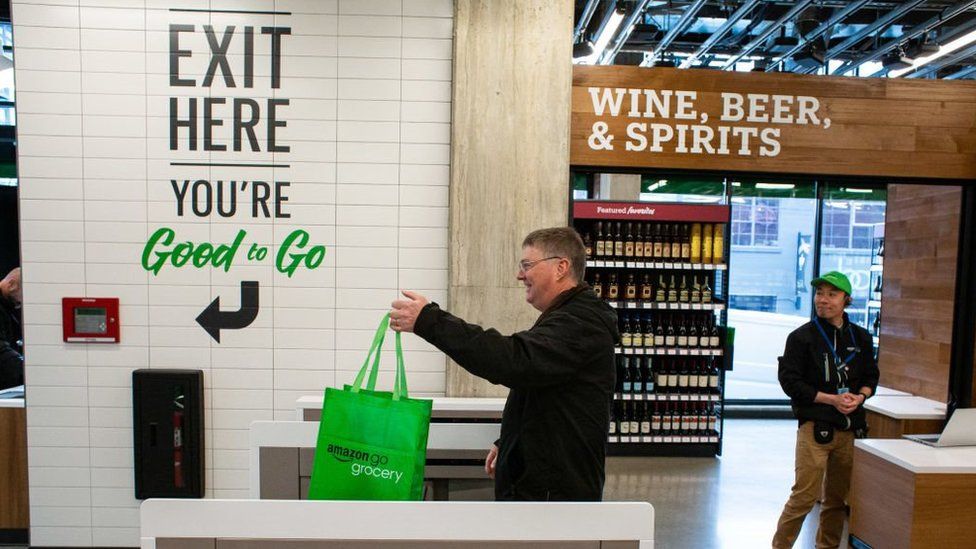One of the most under-exposed tech trends these days is what we call Retail-as-a-Service (RaaS). As its name implies, this is software that helps retailers optimize operations and logistics. It’s everything from to inventory management to analytics that informs optimal in-store layouts and customer foot traffic.
RaaS has gotten the most attention for its application to cashier-less checkout. This includes Amazon’s work with it’s Go stores, and its subsequent moves to spin out that technology for third parties to use. This borrows from the AWS playbook in incubating a technology internally then releasing it to the world.
Since Amazon first made this move with its “Just Walk Out” technology, it has rolled out several orbiting parts. These include its Amazon One palm scanning technology to streamline everything from grocery check-out to event ticketing. It even launched a full-fledged clothing store infused with its RaaS tech.
As background, Just Walk Out uses a combination of cameras, sensors, computer vision and machine learning to enable automatic payments as customers shop and walk out. The goal is to avoid checkout bottlenecks and optimize retailer yield. So far, it’s used at Whole Foods and Starbucks among others.
Atomized Insights
Now, the latest move in Amazon’s RaaS conquest is deeper analytics. Know simply as Store Analytics (classic Amazon branding), it brings retailers more atomized insights about the sales of the products they carry. It’s now available to any retailers that use the Just Walk Out platform.
Store Analytics includes metrics on how products are being discovered in store, as well as customer behavior like consideration and (of course) purchase. The consideration metrics are notable in terms of tracking dwell times around certain products, using the sensor-based approach noted above.
The question is if that “mid-funnel” behavior can be used to inform strategies like product placement or packaging. These are key considerations that link upper-funnel activity (what brought shoppers to a given store) to the lower-funnel (conversion). The mid-funnel is often opaque – especially in store aisles.
Beyond strategic decisions like layout and product placement, Store Analytics can support upstream decisions like what products to stock. Essentially, the technology is meant to bring eCommerce-like data to the physical world (editor’s note: This is the theme of the upcoming Localogy Place event).
In fact, this online-offline link happens on several levels. For example, being Amazon, it can track in-store product exposure that caused subsequent lifts in online purchases. This isn’t done on an individual-shopper level (see note below regarding privacy), but in terms of aggregate regional lifts in sales.
Store Analytics also works with in-store advertising, such as digital signage. This is a growing category (DOOH) as we examined recently, due to its privacy-friendliness. Advertisers are shifting budget from behaviorally-targeted media (e.g. social) to contextually-targeted fare (e.g. video & display).
Speaking of privacy, Amazon stresses that all the data collection in Store Analytics is aggregated and anonymized. It tracks patterns in shopper behavior but no personally-identifiable information for any given shopper. This is table stakes for any online or offline analytics product rolled out today.
SMB SaaS Mix
Stepping back, the question raised by all of the above is why? Why is Amazon building out a RaaS strategy to begin with? One answer is revenue diversification. Just like its moves into advertising, RaaS and other programs help Amazon maintain revenue growth as its core eCommerce business matures.
Also like its advertising business, it’s about adjacency and synergy. Amazon’s RaaS moves support its core eCommerce business in a few ways. For example, Amazon One palm prints are linked to Amazon accounts, allowing Amazon to track offline behavior to target online product suggestions.
As part of that ongoing RaaS expansion, large retailers will be initial adopters. But as it evolves, it could move down market to SMBs. Whether it’s Amazon selling it or someone else — SMBs typically see Amazon as the enemy — RaaS could increasingly become an important part of the SMB SaaS mix.




